A blog dedicated to documenting the insurgencies around United States citizenship.
Don't wanna be here? Send us removal request.
Link
916 notes
·
View notes
Photo

Today in history: November 20, 1969 - Indians of All Tribes (IAT) begins occupation of Alcatraz Island, demanding that the abandoned site of the infamous closed prison be turned over to Native people.
The Alcatraz Occupation lasted for nineteen months, from November 20, 1969, to June 11, 1971, and was forcibly ended by the U.S. government. According to the IAT, the Treaty of Fort Laramie (1868) between the U.S. and the Sioux returned all retired, abandoned or out-of-use federal land to the Native people from whom it was acquired. Alcatraz penitentiary closed on March 21, 1963, and the island was declared surplus federal property in 1964.
After a 1969 fire destroyed a San Francisco Indian center and Interior Secretary Walter J. Hickel offered to turn Alcatraz into a national park, the protesters mobilized. The occupiers wanted to transform the island into a center for Native American Studies, an American Indian spiritual center, an ecology center, and an American Indian Museum. The Occupation attained international attention for the situation of Indigenous peoples in the United States, and inspired a wave of militant activism among Native Americans.
Via Freedom Road Socialist Organization (Fight Back!)
143 notes
·
View notes
Link
Anthropologists once excavated the graves of thousands of Native Americans. Now museums in the U.S. are slowly working to return those remains and funerary objects to tribes.
A village in southwest Alaska recently reburied 24 of their ancestors who had been excavated by a Smithsonian anthropologist in 1931.
About half of the village of Igiugig crowded into the Russian Orthodox Church in the center of town on a drizzly fall day. In the center of the nave sat three handmade, wooden coffins that held the bones from the now-abandoned settlement of Kaskanak.
The remains were unearthed by Aleš Hrdlička, who was the head of the anthropology department in what is now the Smithsonian’s National Museum of Natural History. The question of how people originally came to North America and from where drove Hrdlička to dig up the bones of Native Americans all around the United States. Historians estimate that he took thousands to Washington, D.C., for research.
After more than eight decades in the museum’s collection, Igiugig’s ancestors finally returned home for reburial.
The community of Igiugig is majority Yupik, a people group native to Alaska.
Annie Wilson, an elder in the village, attended the funeral service and explained that Hrdlička’s excavation was fundamentally objectionable in Yupik culture.
“We were always taught you don’t dig up old bones of anything or anybody. That’s their resting place until the good Lord comes someday,” said Wilson.

Coffins carrying Igiugig ancestors are loaded onto a skiff for the final stretch of their journey, from the Smithsonian in Washington, D.C., to a burial ground in Alaska.
Keep reading
1K notes
·
View notes
Photo
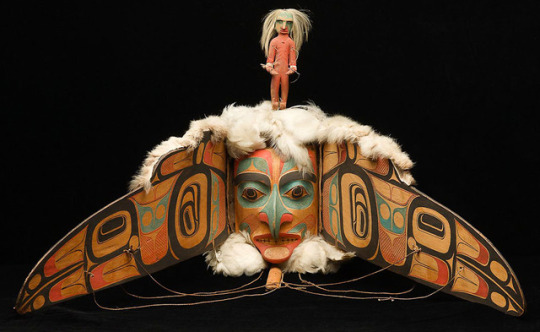

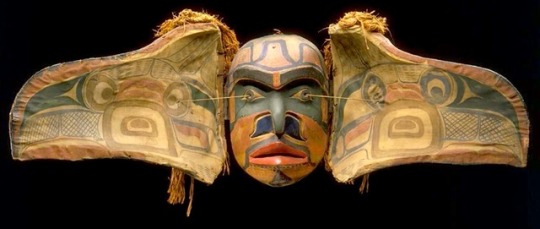



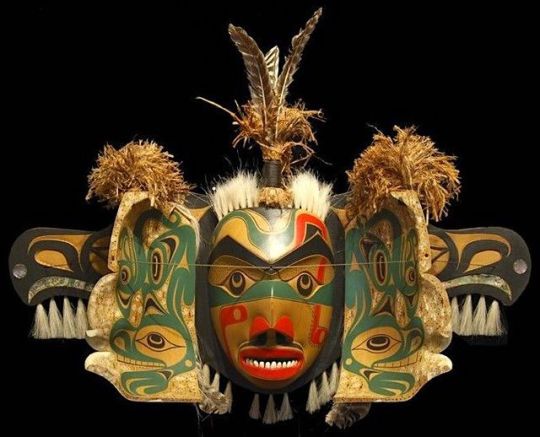
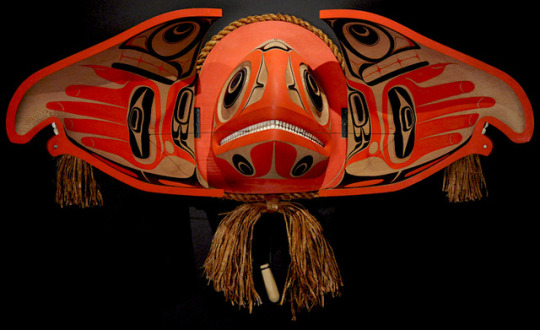


An assortment of anthropomorphic transformation masks created by Pacific Northwest Coast Indigenous peoples on the continent of North America.
8K notes
·
View notes
Photo

Choctaw Code Talkers
Called by some the “original Code Talkers”, Choctaw Indian soldiers played an important part of the allied victory in WWI.
In 1918, not yet citizens of the U.S., Choctaw members of the American Expeditionary Forces were asked to use their Native language as a powerful tool against the German Forces in World War I, setting a precedent for code talking as an effective military weapon and establishing them as America’s original Code Talkers. The Indian Citizenship Act of 1924 finally granted citizenship to its native population.
23 notes
·
View notes
Photo










Public Art (No. 81)
Port Angeles Visitor Center, WA (two pics)
The Rocktopus by Oliver Strong and Maureen Wall, Port Angeles (three pics)
South Bend People of Thunderbird Chinook Nation Totem Pole by Arthur Lunke, South Bend
The Legend of the Portage Lakes A Love Story by Eric Van Trent, South Bend
World’s Largest Oyster, South Bend (three pics)
5 notes
·
View notes
Photo



The Civil Rights Act of 1968:
An Act of April 11, 1968, Public Law 90-284, 82 STAT 73, to Prescribe Penalties for Certain Acts of Violence or Intimidation, and for Other Purposes
File Unit: Public Law 90-284, 1789 - 2011. Series: Enrolled Acts and Resolutions of Congress, 1789 - 2011. Record Group 11: General Records of the United States Government, 1778 - 2006
The Civil Rights Act of 1968 was approved on April 11, 1968 by President Lyndon B. Johnson. It is considered one of Johnson’s landmark laws due to Title VIII, known as the Fair Housing Act, and Titles II through VII, known as the Indian Civil Rights Act.
More at the LBJ Presidential Library
114 notes
·
View notes
Video
youtube
Teen Vogue: Native American Girls Describe The REAL History Behind Thanksgiving.
I debated sharing this on here or not because I did not want to cause any emotional distress on this page. However, the last scene of this video was so satisfying that I needed to share it.
2K notes
·
View notes
Photo




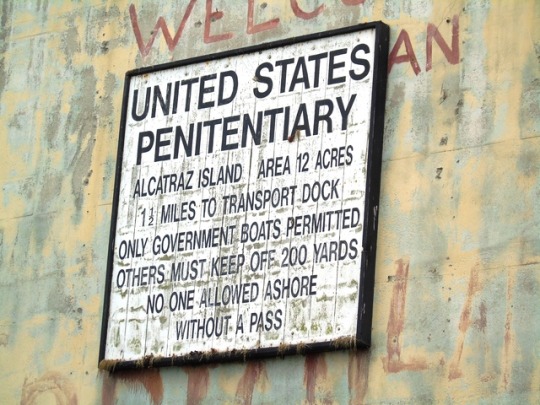





Occupation of Alcatraz: Native American activists seize control of Alcatraz Island on November 20, 1969, until being ousted by the U.S. Government on June 11, 1971.
2K notes
·
View notes
Photo






In honor of Native American Heritage Month, here are some iconic figures of the Interwar/Roaring Twenties Period.
536 notes
·
View notes
Quote
The true history of any oppressed people is impossible to find in history books.
Assata Shakur, Assata: An Autobiography, 1987 (via octopusgirl)
4K notes
·
View notes
Photo

Nearly 13,000 Native Americans fought during World War I, despite not having a U.S. citizenship.
2K notes
·
View notes
Link
Presidential candidate Donald Trump’s proposal to deport all 11 million immigrants living in the country illegally, along with their U.S.-born children, sounds far-fetched. But something similar happened before.
During the 1930s and into the 1940s, up to 2 million Mexicans and Mexican-Americans were deported or expelled from cities and towns across the U.S. and shipped to Mexico. According to some estimates, more than half of these people were U.S. citizens, born in the United States.
10 notes
·
View notes
Photo

Source: George J. Sanchez, Becoming Mexican-American: Ethnicity, Culture and Identity in Chicano Los Angeles, 1900-1945 (Oxford: Oxford University Press, 1993).
8 notes
·
View notes
Photo










NYC Prayer March for #StandingRock: Indigenous people and allies gathered in front of the National Museum of the American Indian in downtown Manhattan to show their support and solidarity with the Standing Rock Sioux Nation. #NoDAPL #StandwithStandingRock #NativeLivesMatter
3K notes
·
View notes
Photo

Puerto Ricans in solidarity & unity with Black Lives Matter
“Así como mi Puerto Rico está de luto por las muertes injustificadas, por la desigualdad y la injusticia permanecemos con el puño en alto (como símbolo de solidaridad y unidad) conectando nuestros corazones a la comunidad negra en Estados Unidos y nuestros hermanos de Black Lives Matter”.
Photo by: Joaquin Medina
1K notes
·
View notes





